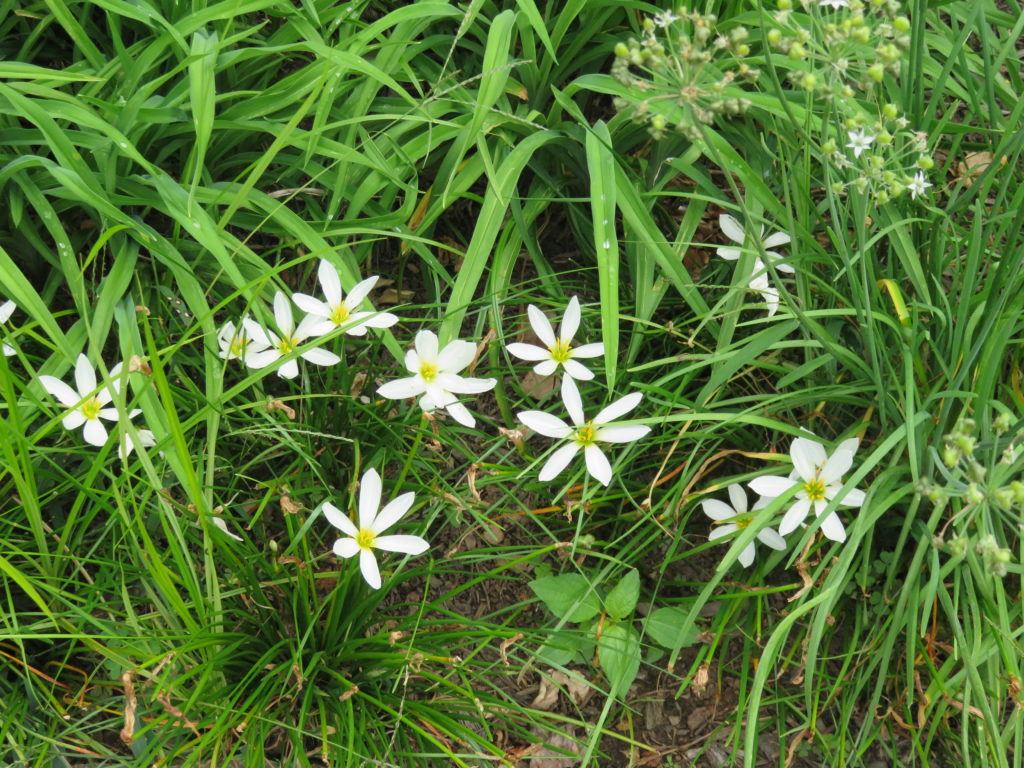
Rain lilies (Zephyranthes), aka Zephyr lily, Atamasco lily, fairy lily, et al. are small perennial bulbs that are native to the southeastern United States, Central and South America (USDA hardiness zones 7-10). In the U.S., these bulbous members of the Amaryllis Family (Amaryllidaceae) grow in shady woodlands and wet meadows where they peek out along the edges of a garden.
Rain lilies crave wet to rainy summer weather and perform poorly in droughty soils. Dormant bulbs wake up during periods when rainfall is plentiful in summer and early autumn. Plant (sow) them in the front of the border, in a rock garden, or even in a rain garden. Plantings get more notice by sowing multiples of rain lilies together.
Flower colors range from yellow, white or pink. Butterflies and honeybees are all over these late summer-fall blooming bulbs. Plants have grass-like foliage and their heights range from 2 to 12 inches (5 – 30 cm.) depending on species.
Rain lilies bloom from spring to autumn (species dependent). Sow bulbs at a depth of 3 inches (8 cm), and a spacing of 4-6 inches (10 -15 cm) apart following the last frost of spring. Plant them @ 8-10 bulbs per sq. ft. The top of the bulb should be about an inch under the soil surface and 2-4 inches apart in containers as they look best when crowded and slightly pot-bound.
They multiply rapidly.
Plants grow in partially shaded or sunny parts of the garden that have well-drained, moist, humus-rich, mildly acidic soil. Rain lilies benefit from fertilizing at planting time and annually. In northern gardeners grow these non-hardy bulbs in containers as annuals or overwinter the pots in a cool dry location.
Rain lilies are both pest resistant and critter proof. Bulbs and all parts of the plants contain toxic alkaloids that can cause vomiting, convulsions, and death if ingested.

 Posted in
Posted in 
